Abstract
There is a store, perhaps in chromaffin tissue, of noradrenaline in tissues with a sympathetic innervation. The store is depleted by treatment with reserpine. Sympathomimetic amines like tyramine act only when this store is present and have no effect when the store is depleted. They also fail to act in the presence of cocaine. Catecholamines like noradrenaline have a much greater action than usual when the store is depleted, and they have a much greater action in the presence of cocaine. It is suggested that cocaine has the effect of blocking release from the store, so that the action of tyramine is abolished and the spontaneous release from the store which is responsible for the normal (low) sensitivity to noradrenaline is stopped. Noradrenaline is taken up into the store in the heart and the vessel wall from the blood, and the disappearance of noradrenaline from the blood is in part due to this uptake and not entirely to destruction. Cocaine may prevent this uptake of noradrenaline by the tissue stores. Experiments on rabbit atria, on the vessels of the rabbit ear and on the heart-lung preparation are described which are consistent with this hypothesis.
Full text
PDF
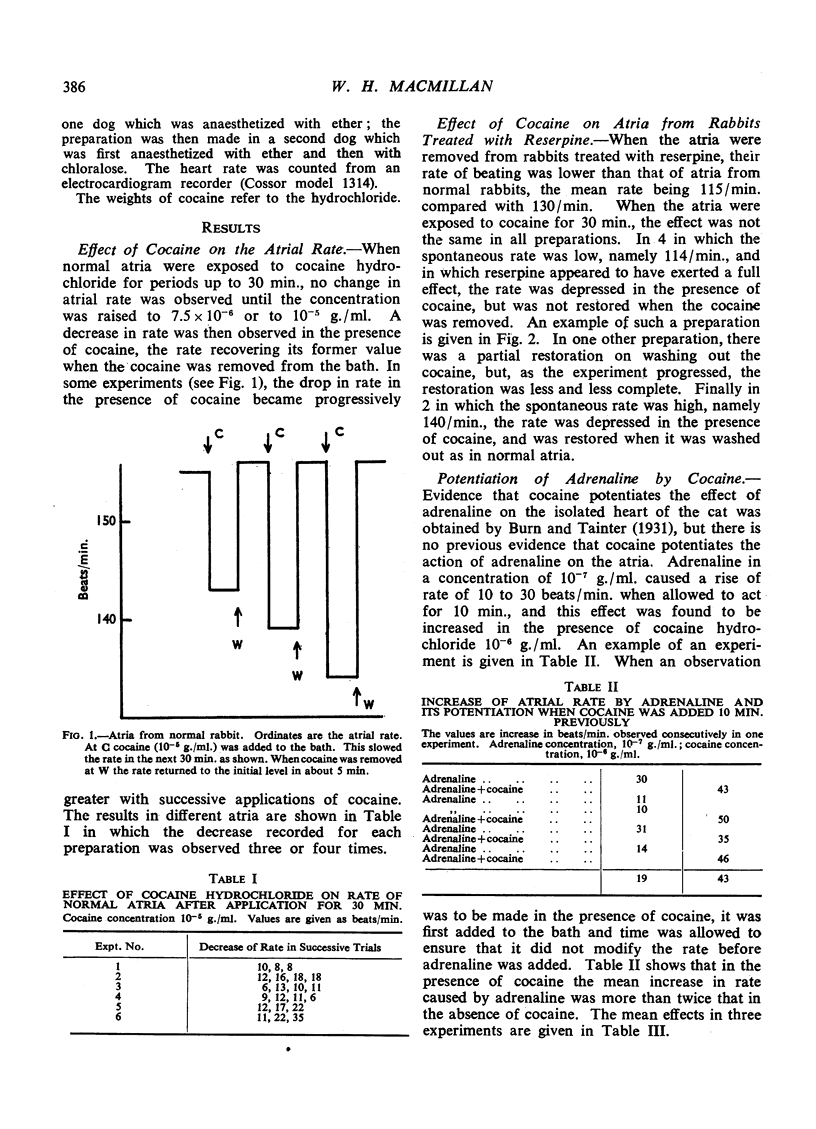
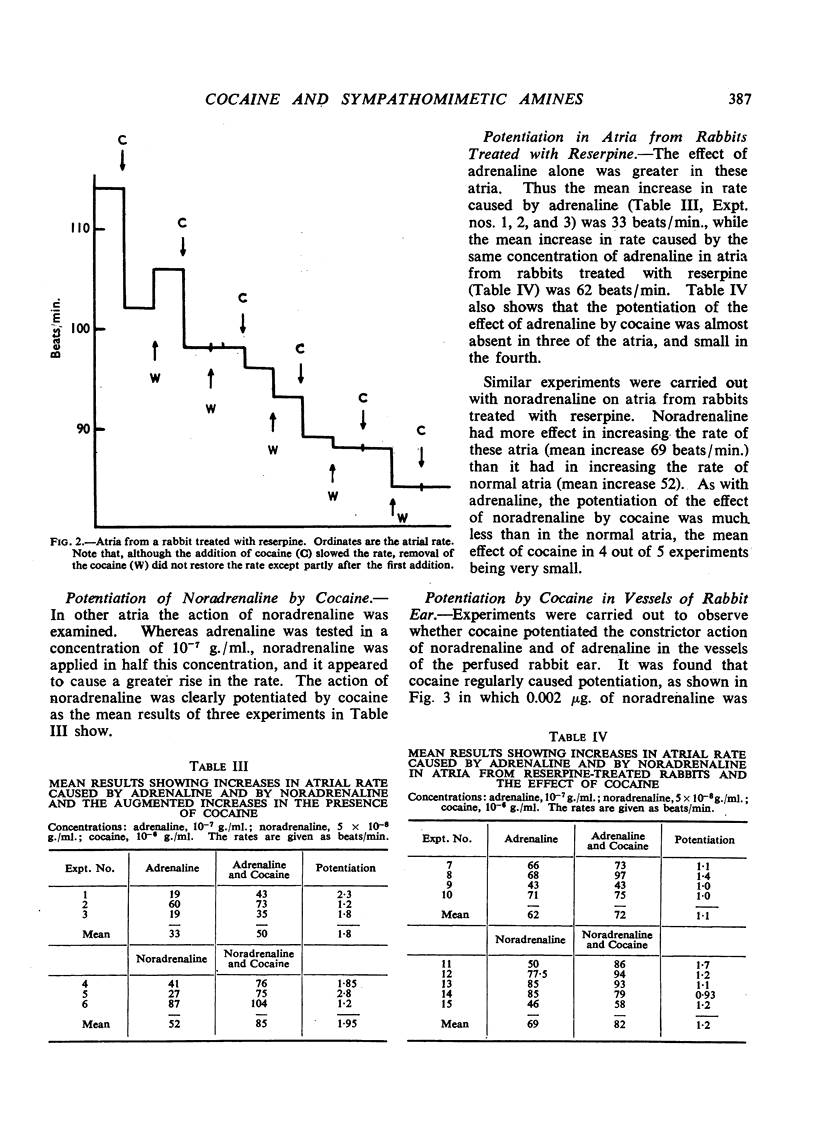
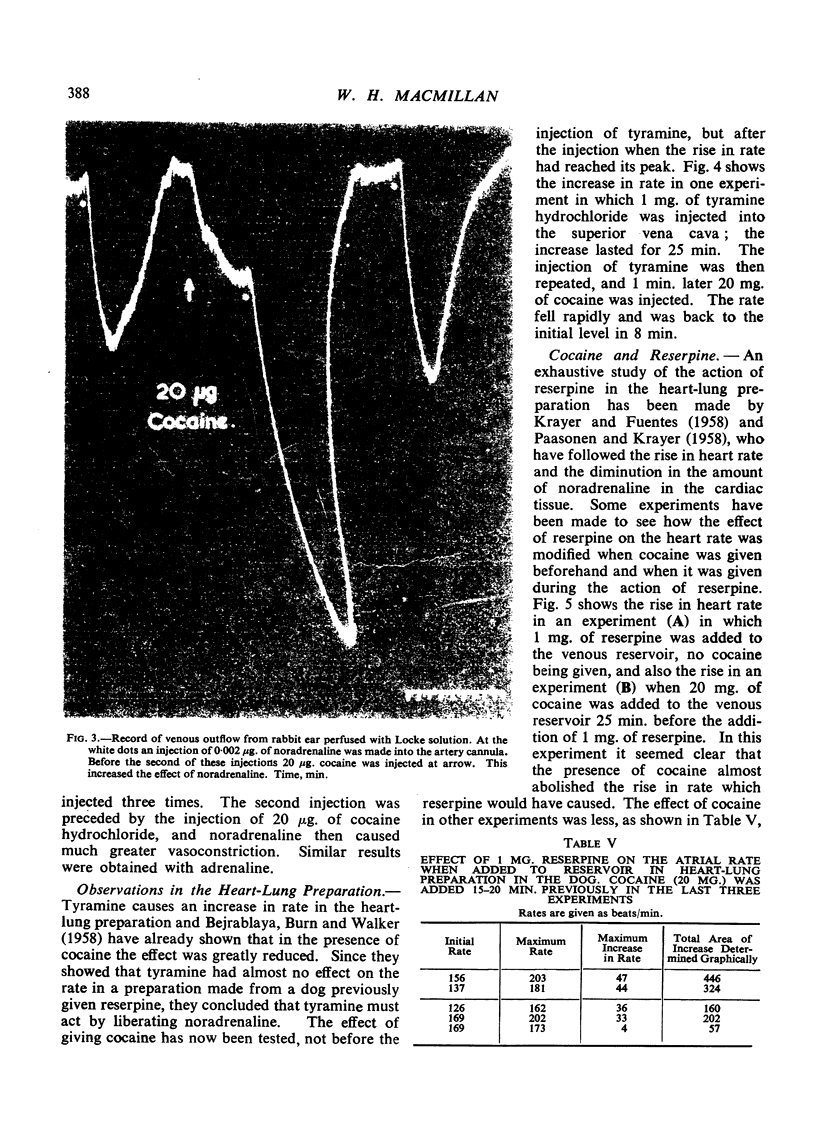
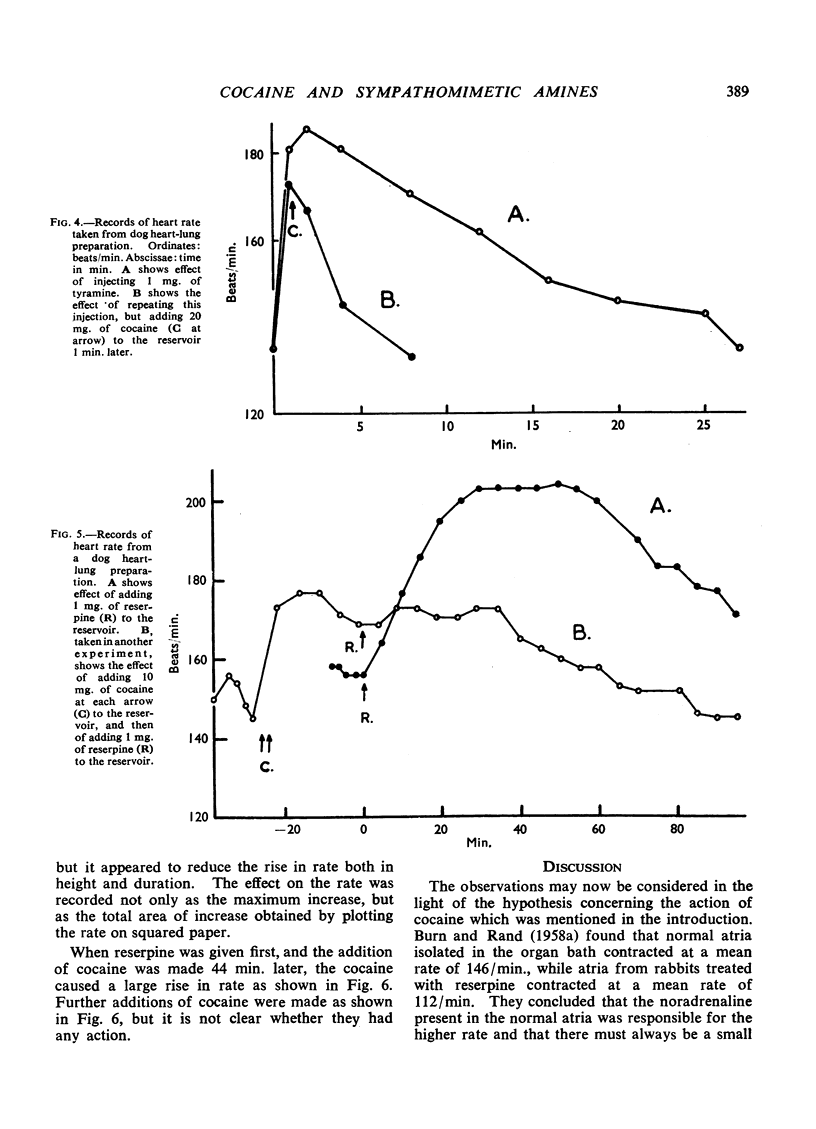

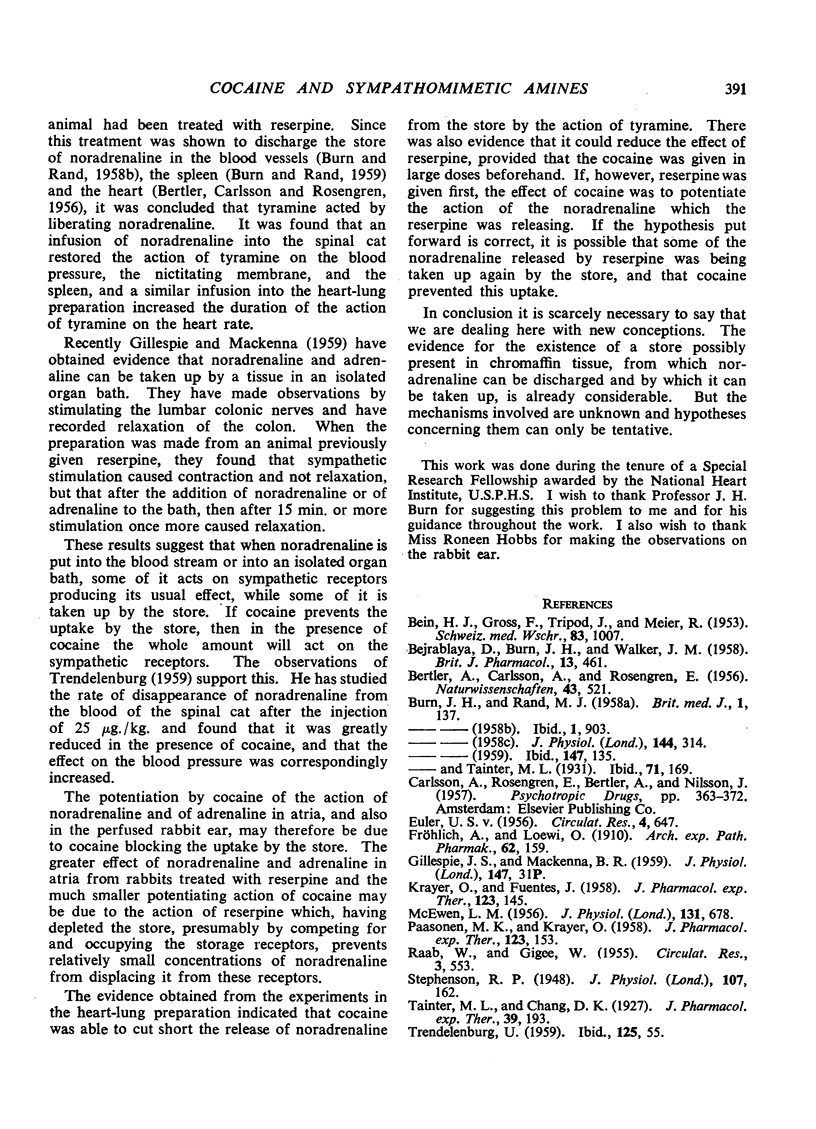
Selected References
These references are in PubMed. This may not be the complete list of references from this article.
- BEIN H. J., GROSS F., TRIPOD J., MEIER R. Experimentelle Untersuchungen über Serpasol (Reserpin), ein neues, sehr wirksames Rauwolfiaalkaloid mit neuartiger zentraler Wirkung. Schweiz Med Wochenschr. 1953 Oct 17;83(42):1007–1012. [PubMed] [Google Scholar]
- BEJRABLAYA D., BURN J. H., WALKER J. M. The action of sympathomimetic amines on heart rate in relation to the effect of reserpine. Br J Pharmacol Chemother. 1958 Dec;13(4):461–466. doi: 10.1111/j.1476-5381.1958.tb00238.x. [DOI] [PMC free article] [PubMed] [Google Scholar]
- BURN J. H., RAND M. J. Action of nicotine on the heart. Br Med J. 1958 Jan 18;1(5063):137–139. doi: 10.1136/bmj.1.5063.137. [DOI] [PMC free article] [PubMed] [Google Scholar]
- Burn J. H., Tainter M. L. An analysis of the effect of cocaine on the actions of adrenaline and tyramine. J Physiol. 1931 Feb 25;71(2):169–193. doi: 10.1113/jphysiol.1931.sp002724. [DOI] [PMC free article] [PubMed] [Google Scholar]
- KRAYER O., FUENTES J. Changes of heart rate caused by direct cardiac action of reserpine. J Pharmacol Exp Ther. 1958 Jun;123(2):145–152. [PubMed] [Google Scholar]
- MCEWEN L. M. The effect on the isolated rabbit heart of vagal stimulation and its modification by cocaine, hexamethonium and ouabain. J Physiol. 1956 Mar 28;131(3):678–689. doi: 10.1113/jphysiol.1956.sp005493. [DOI] [PMC free article] [PubMed] [Google Scholar]
- PAASONEN M. K., KRAYER O. The release of norepinephrine from the mammalian heart by reserpine. J Pharmacol Exp Ther. 1958 Jun;123(2):153–160. [PubMed] [Google Scholar]
- RAAB W., GIGEE W. Specific avidity of the heart muscle to absorb and store epinephrine and norepinephrine. Circ Res. 1955 Nov;3(6):553–558. doi: 10.1161/01.res.3.6.553. [DOI] [PubMed] [Google Scholar]
- Stephenson R. P. An outflow recorder useful for detecting small amounts of vasopressin. J Physiol. 1948 Mar 15;107(2):162–164. doi: 10.1113/jphysiol.1948.sp004259. [DOI] [PMC free article] [PubMed] [Google Scholar]
- TRENDELENBURG U. The supersensitivity caused by cocaine. J Pharmacol Exp Ther. 1959 Jan;125(1):55–65. [PubMed] [Google Scholar]
- VON EULER U. S. The catechol amine content of various organs of the cat after injections and infusions of adrenaline and Noradrenaline. Circ Res. 1956 Nov;4(6):647–652. doi: 10.1161/01.res.4.6.647. [DOI] [PubMed] [Google Scholar]


